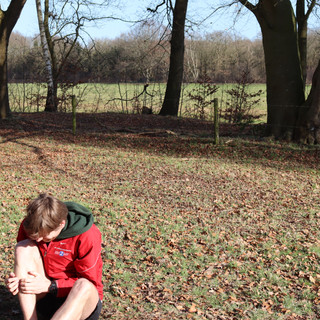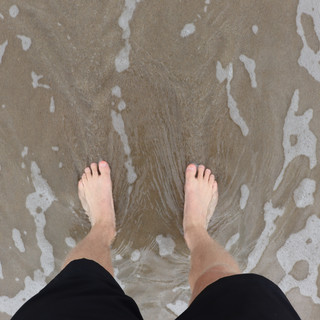Shin Splints
- Mick van Eeuwijk
- Apr 19, 2021
- 4 min read
Updated: Nov 27, 2021
If you are guessing the most common sport related injuries, shin splints is probably pretty high on your list. While shin splints, or medial tibial stress syndrome (MTSS), is a common and well heard of injury, what does it really mean, what causes it and how can you treat as well as prevent it?
Shin Splints, what are they?
Many athletes are mindful not to over train as to avoid injury, one of the most prominent being shin splints. The reason that shin splints are especially prevalent in athletes that over train is because they are caused by repetitive stress on the shinbone and the connective tissues that attach your muscles to the bone. Therefore, the more you repeatedly cause impact on your shinbone and the muscles surrounding, the more likely the connective tissue will experience stress and lead to injury.
While over training is one of the most common reasons for the onset of shin splints, it is not the only one. It can also be a result of:
Supination, or what is known as under pronation. This is when your weight rolls onto the outside edge of your foot.
Sudden increase in training intensity and impact on the shin bones.
Running on hard surfaces, especially when previously used to running on soft surfaces.
Laxity of the knee joint meaning that the ligaments in your knee are loose and your knee can rotate relatively far inwards and outwards. This means the muscles surrounding your shin have to work harder to stabilize the knee, resulting in a constant strain of the muscles which is something that may lead to shin splints.
Thin tibia (shin bone)
Laxity of the hip can result in shin splints as the muscles have to work harder to provide stability.

How to prevent shin splints?
Shin splints are a pain, literally and figurally. Not only do they hurt, but the best way to treat them is through weeks of rest, which is also a pain. While it is hard to guarantee that you will never experience the effects of shin splints as they are difficult to prevent, the following can be considered to reduce the risk and severity:
Stretch your calves and hamstrings
Avoid sudden increases in physical activity
Allow your body to rest long enough to allow the tissue to restore
Exercise on softer surfaces
Strengthen the muscles in your foot, knee and hips
Buy athletic shoes that are right for you
Stay a healthy body weight
Ow! There is pain in my shin. Do I have shin splints?
Even if you are mindful of the preventative measures mentioned above, there is still a high likelihood that you could experience shin splints as the tissue is easily overloaded. If you are wondering if you have shin splints, some signs are that you may experience a vague pain which is difficult to localize on the inner side of your shin and you experience intense pain at the beginning of your activity which fades away over the duration of the workout.
If you are worried about the pain that you feel and are unsure if it is due to shin splints or a something else such as a stress fracture, it is always worth it to go and consult a physiotherapist. It is likely they will tell you the best treatment is rest and an adapted exercise plan due to the fact that if you over train, you run the risk of permanently injuring yourself and a more difficult recovery process.
Your physiotherapist may also recommend other treatments such as:
Supination correction through kinesiotape to decrease the level of supination on the ankle and therefore less stress on the tibia and surrounding muscles.
Shock absorbing soles which help decrease the load on the shin and surrounding muscles.
Icing your shins to stop the irritation of shin splints
Non Steroid Anti Inflammatory Drugs (NSAID's) to relieve the pain (but we recommend being careful with this one as excessive use can also damage your cartilage)
Posteromedial fasciotomy which is the most extreme measure which includes cutting away the damaged tissue. This treatment should be a last resort and only considered after all other treatments have been tried. This includes additional treatments such as ultrasounds, shockwave therapy, etc.
I have shin splints, what are some exercises I can do?
If you feel the onset of shin splints or you have shin splints, the best thing to do is decrease the amount of high impact activities that you do. Maybe now is the time to try out swimming and biking! This way you minimize the overall load and stress on your shins. In addition to these low impact activities, it is good to strengthen the muscles around the shins so they offer more support and therefore cause less stress. Three strength exercises you could do are:
Calf raises
Calf raises with dynaband
Reversed calf raises with dynaband
Shin splints are a common concern for most athletes, our best advise it to try to exercise on low impact surfaces and build up your activities slowly. If you start to experience pain, it is okay to take a step back and consult your physiotherapist about your concerns. Remember, you should always listen to your body and not over exert yourself.
No time to read? Just listen!
For the Spotify users
#physiotherapyvacation #physicaltherapy #shinsplintsexercises #shinsplintsphysiotherapy #shinsplintsphysicaltherapy









Comments